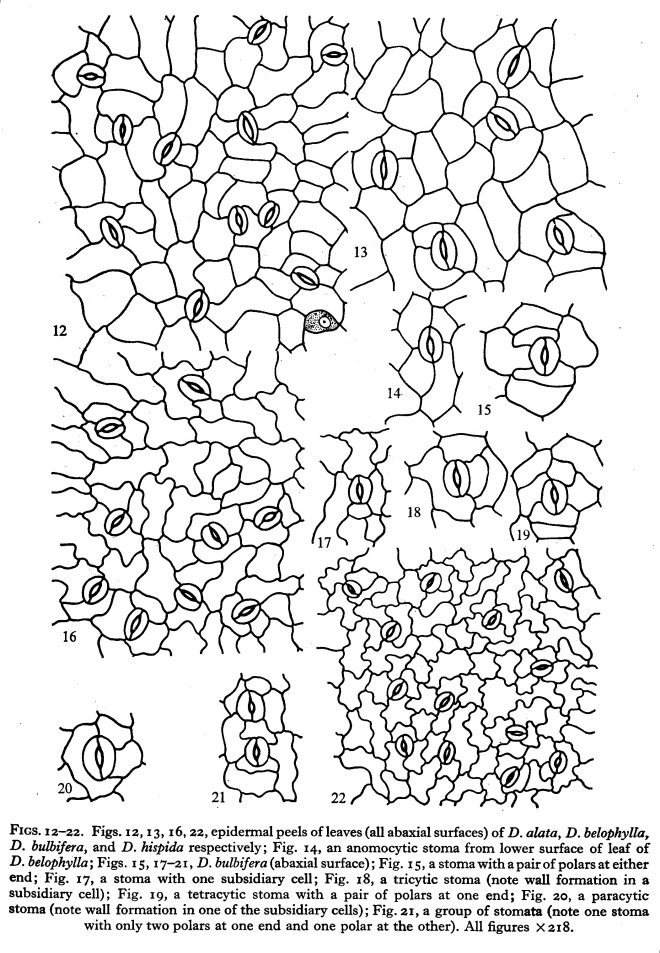Photo credit: Google
Dioscorea bulbifera
Some observations on the diversity of stomata and trichomes in six species of Dioscorea.
by Shah G. L., Gopal B. V. (1972)
Department of Botany, Sardar Patel University, Gujarat, India
in Ann. Bot. 36:997-1004. –
https://aob.oxfordjournals.org/content/36/5/997.short
Abstract
Stomata and trichomes are described on the leaves of six species of Dioscorea.
As many as six types were found in D. bulbifera and D. oppositifolia, four types in D.hispida and D. wallichii, three types in D. belophylla, but only two types in D. alata. Although there is a diversity of stomata even on the same surface, the predominant type is anomocytic in all the species except D. bulbifera in which it is tricytic. Rarely a stoma is also cyclocytic in D. bulbifera.
An increase in the number of subsidiary cells in paracytic, tricytic, or diacytic stomata takes place by the wall formation in them. Similarly a reduction in the number of subsidiary cells of a tetracytic stoma is the result of lateral subsidiary cells assuming the form of epidermal cells.
Abnormalities such as a stoma with one guard cell, degeneration of guard cells, and contiguous stomata are also met with.
The organization of different types of stomata is studied in D. bulbifera and D. wallichii and shown to be perigenous.
Capitate glandular hairs were seen on the leaves of D. belophylla, D. bulbifera, D. hispida, and D. wallichii but non-glandular, uniseriate, 3-celled trichomes were observed only in D. hispida.



